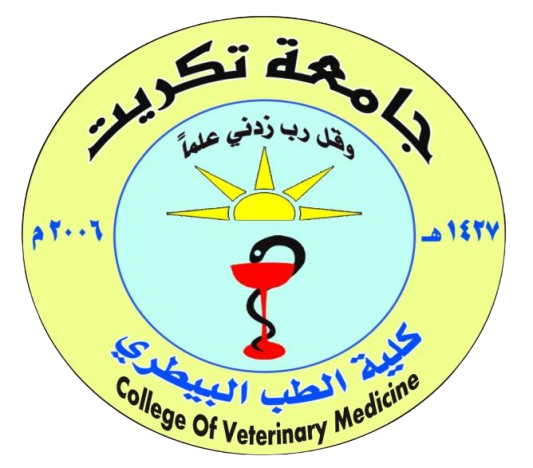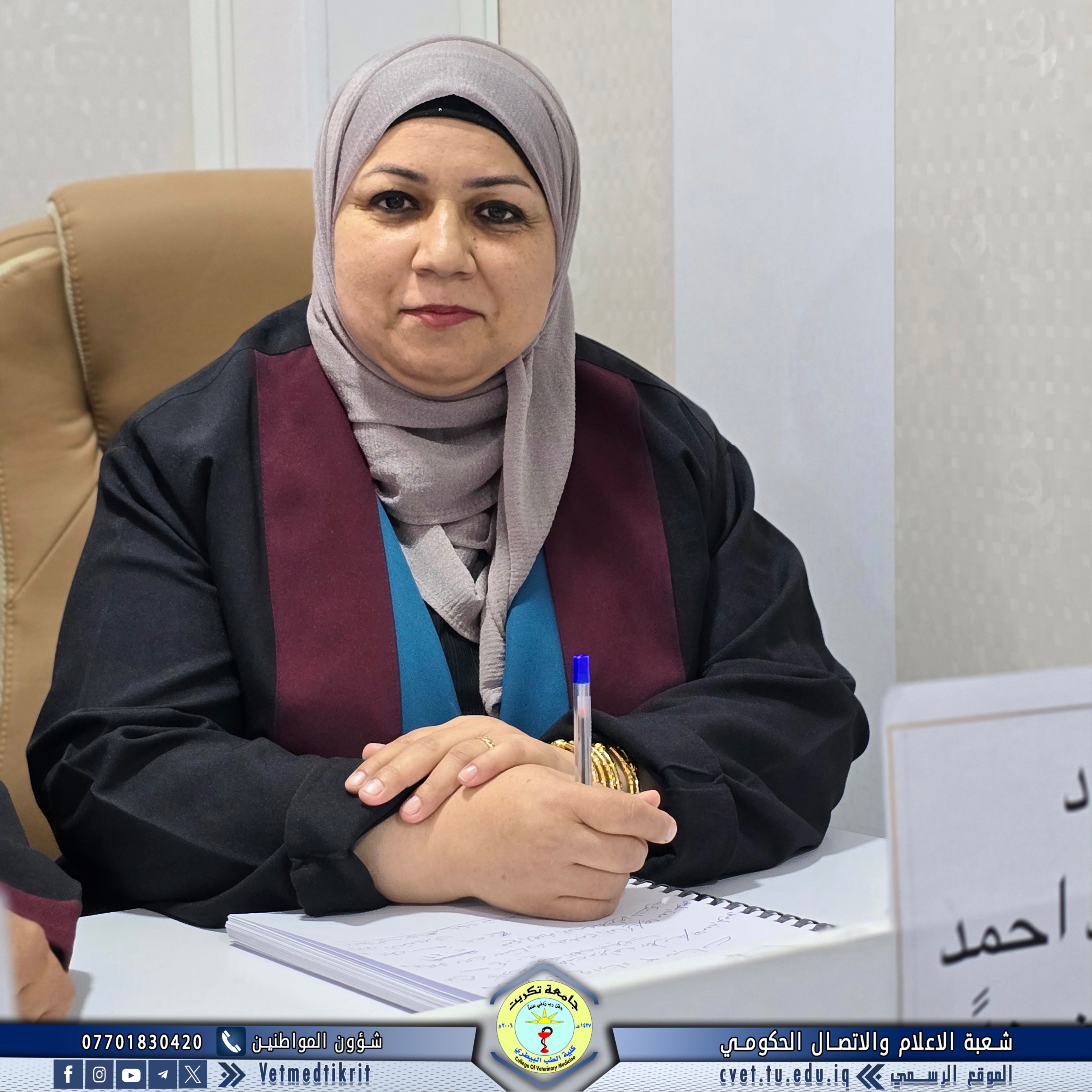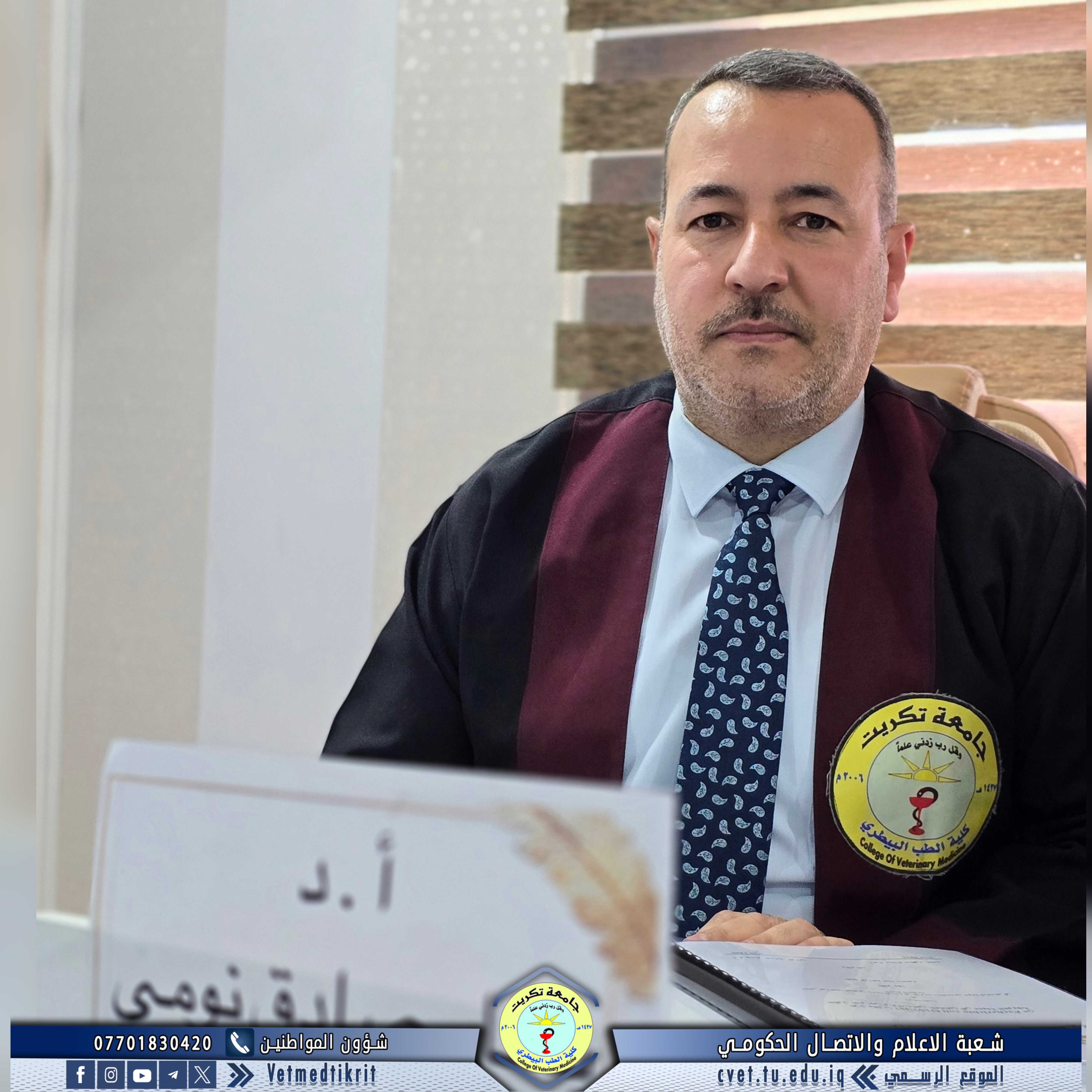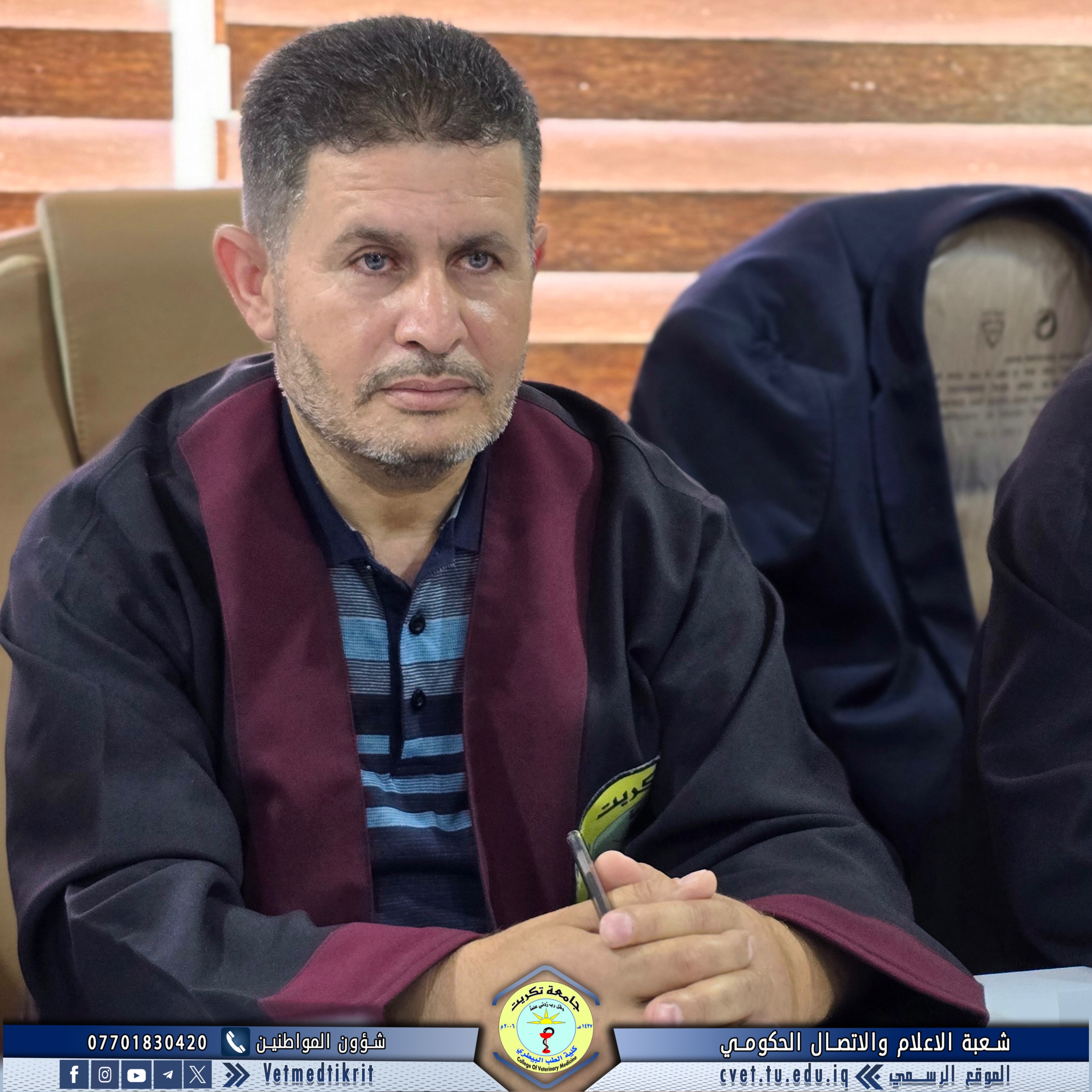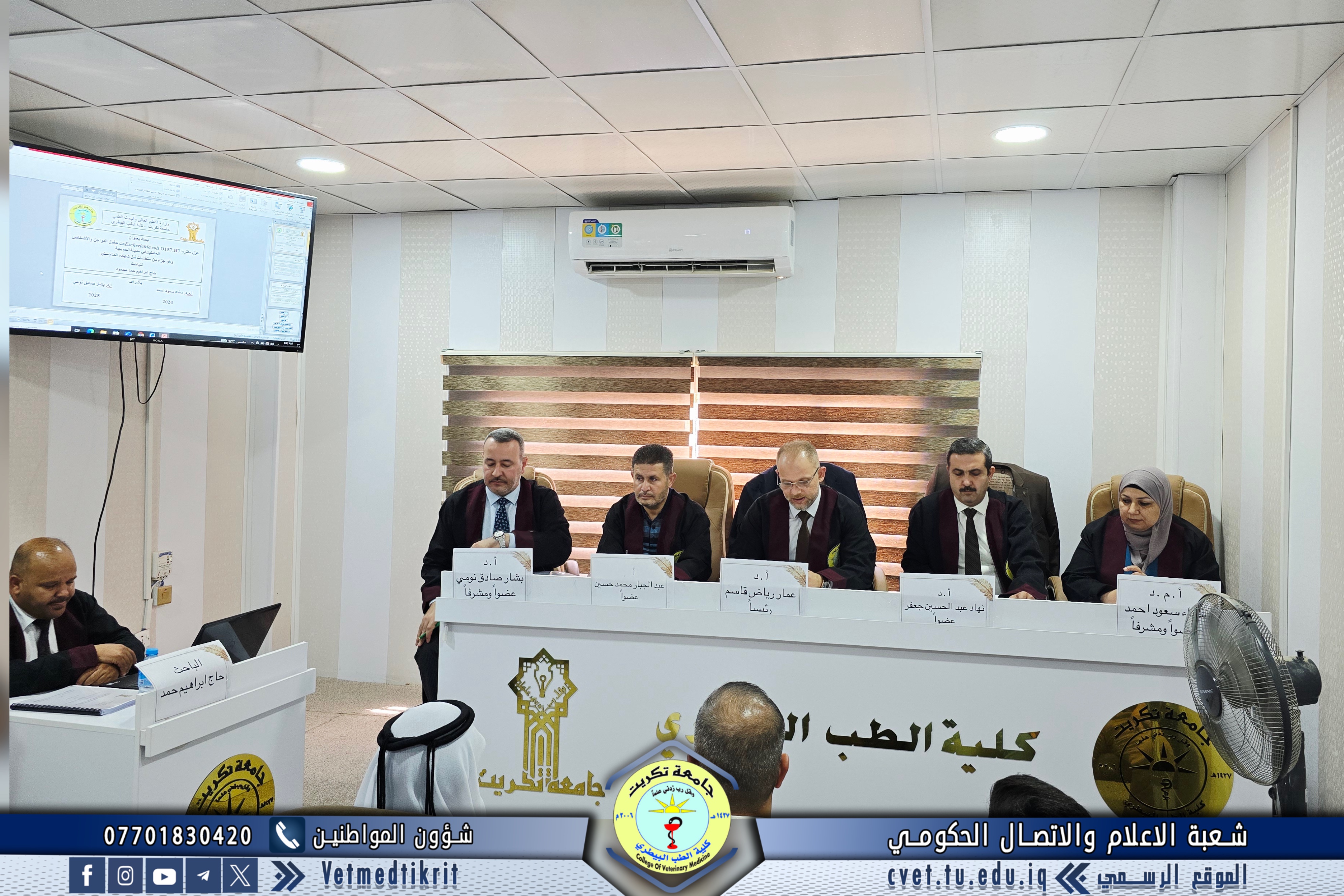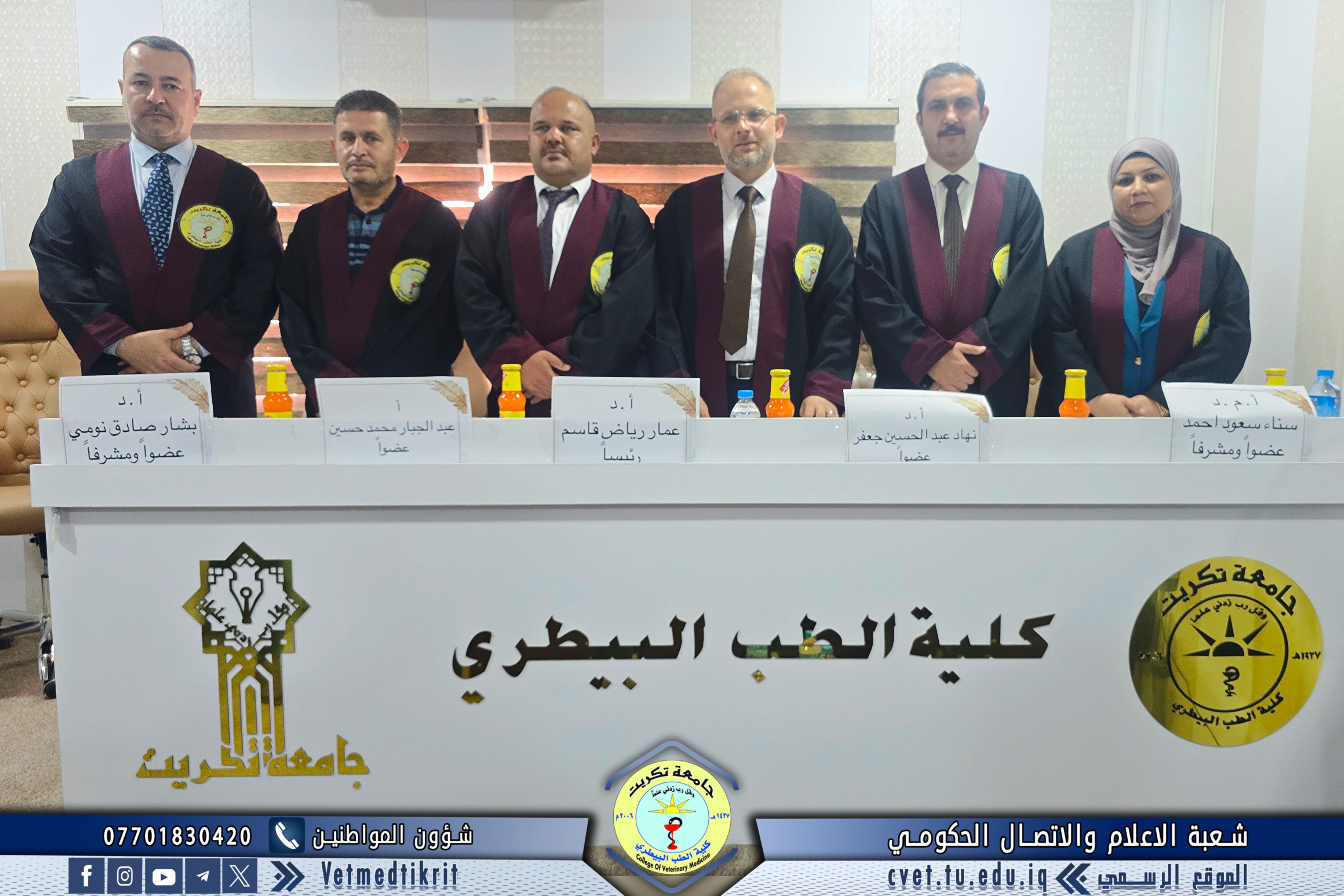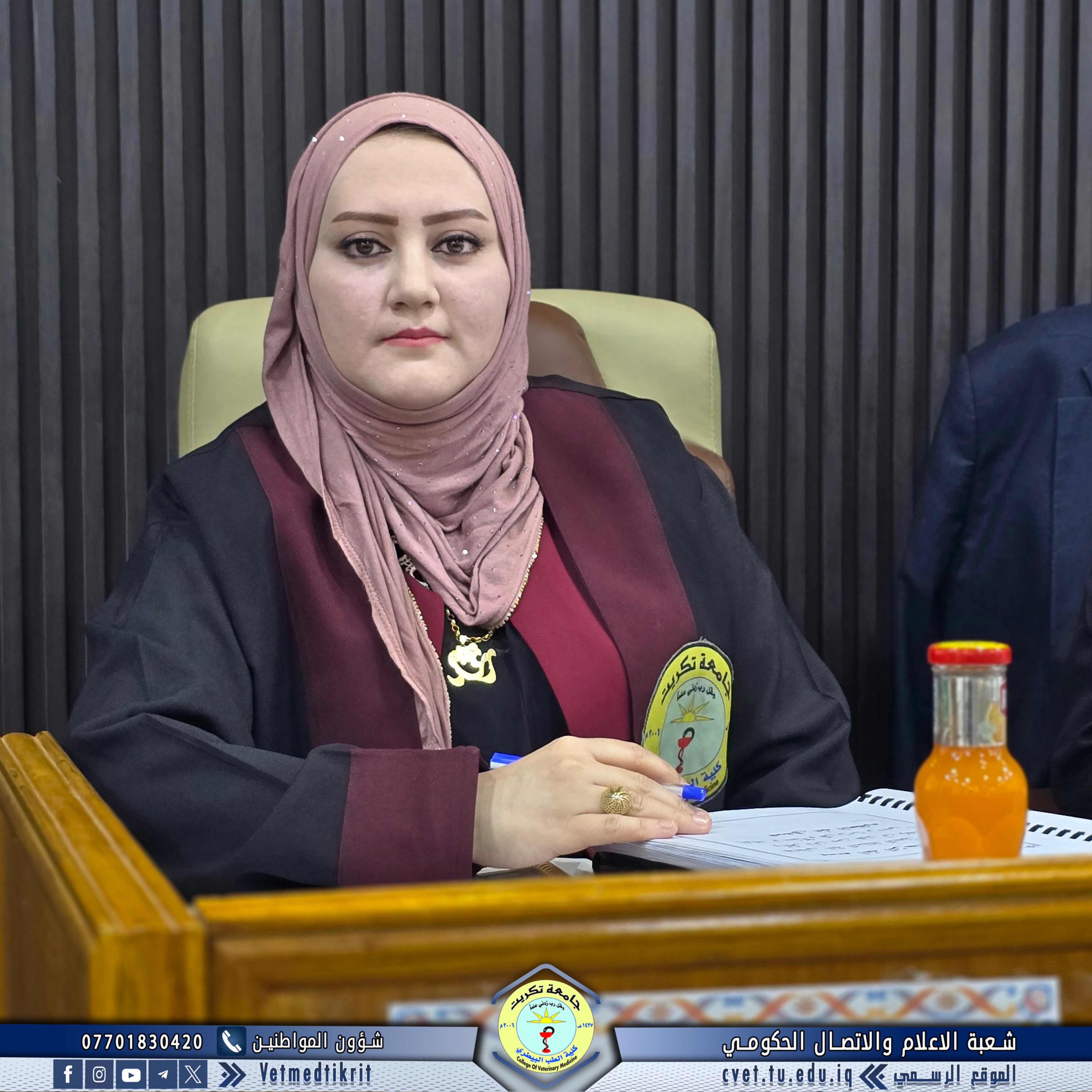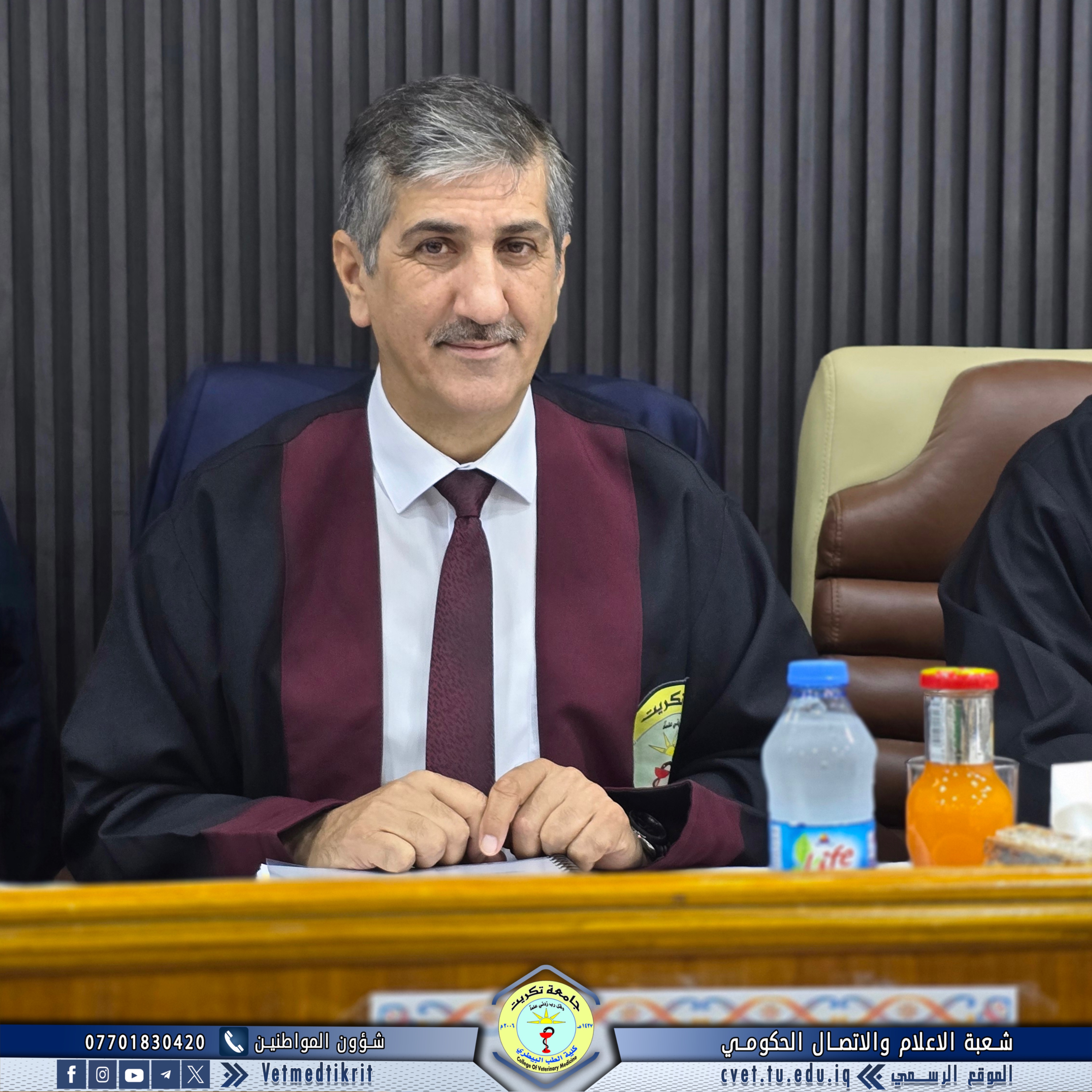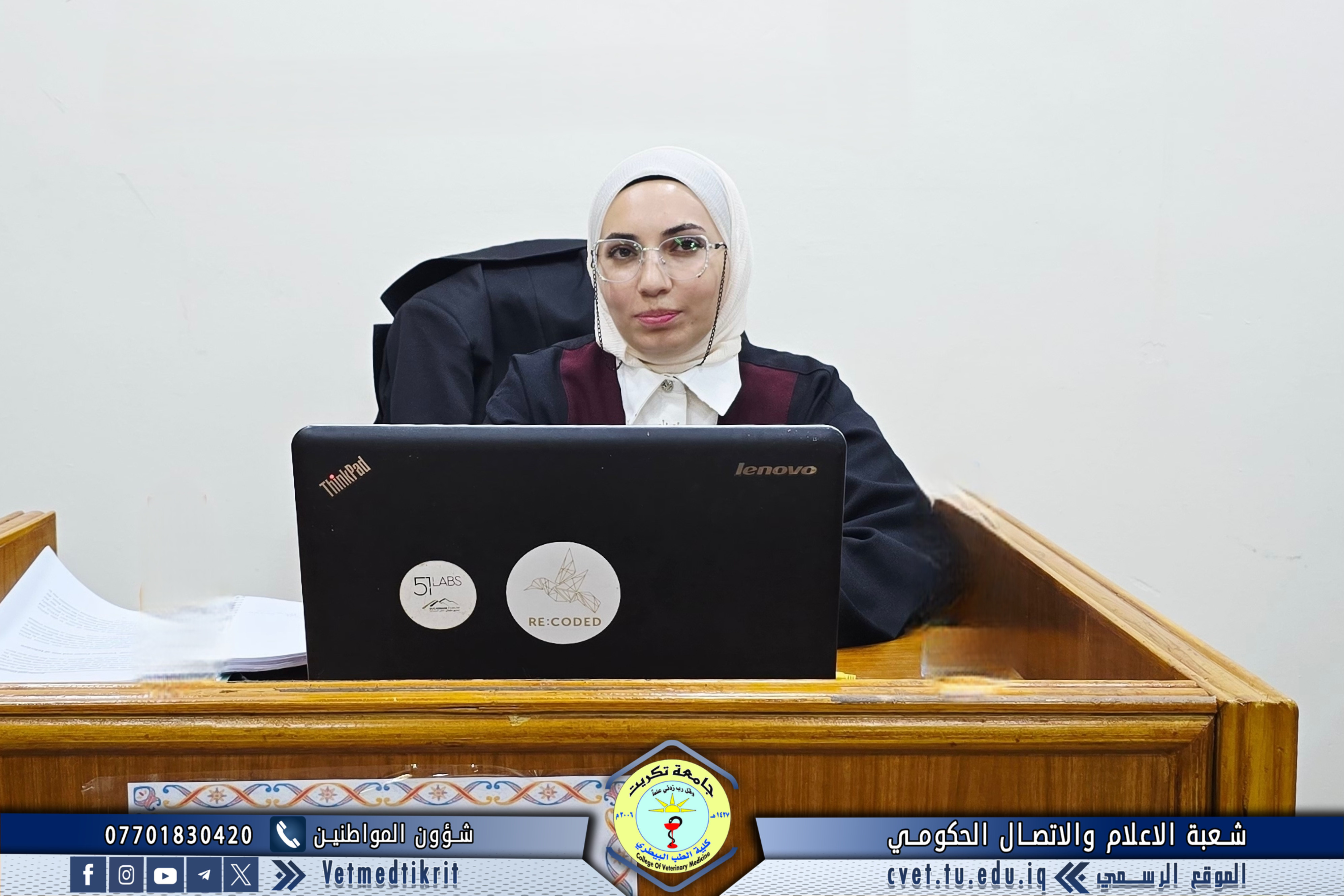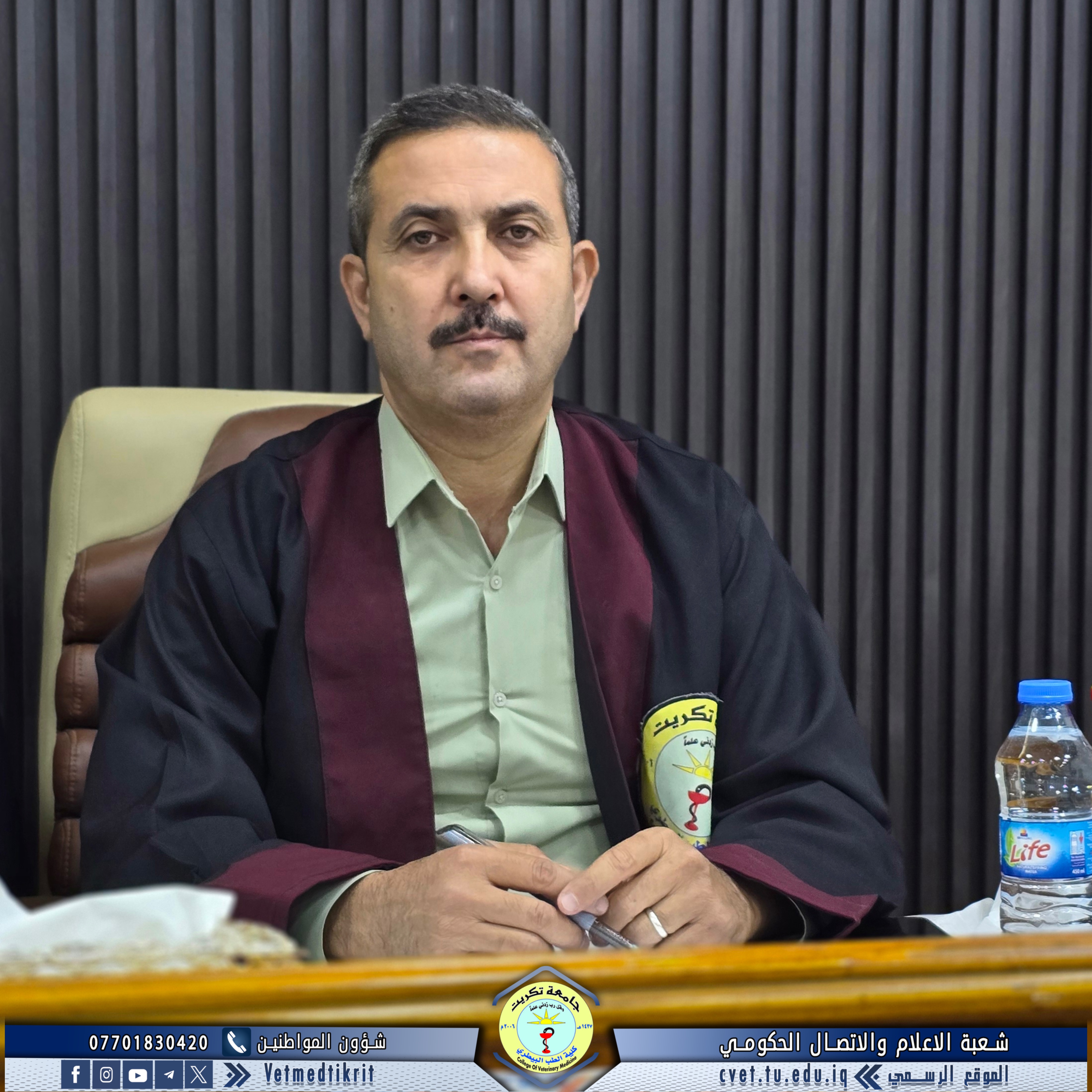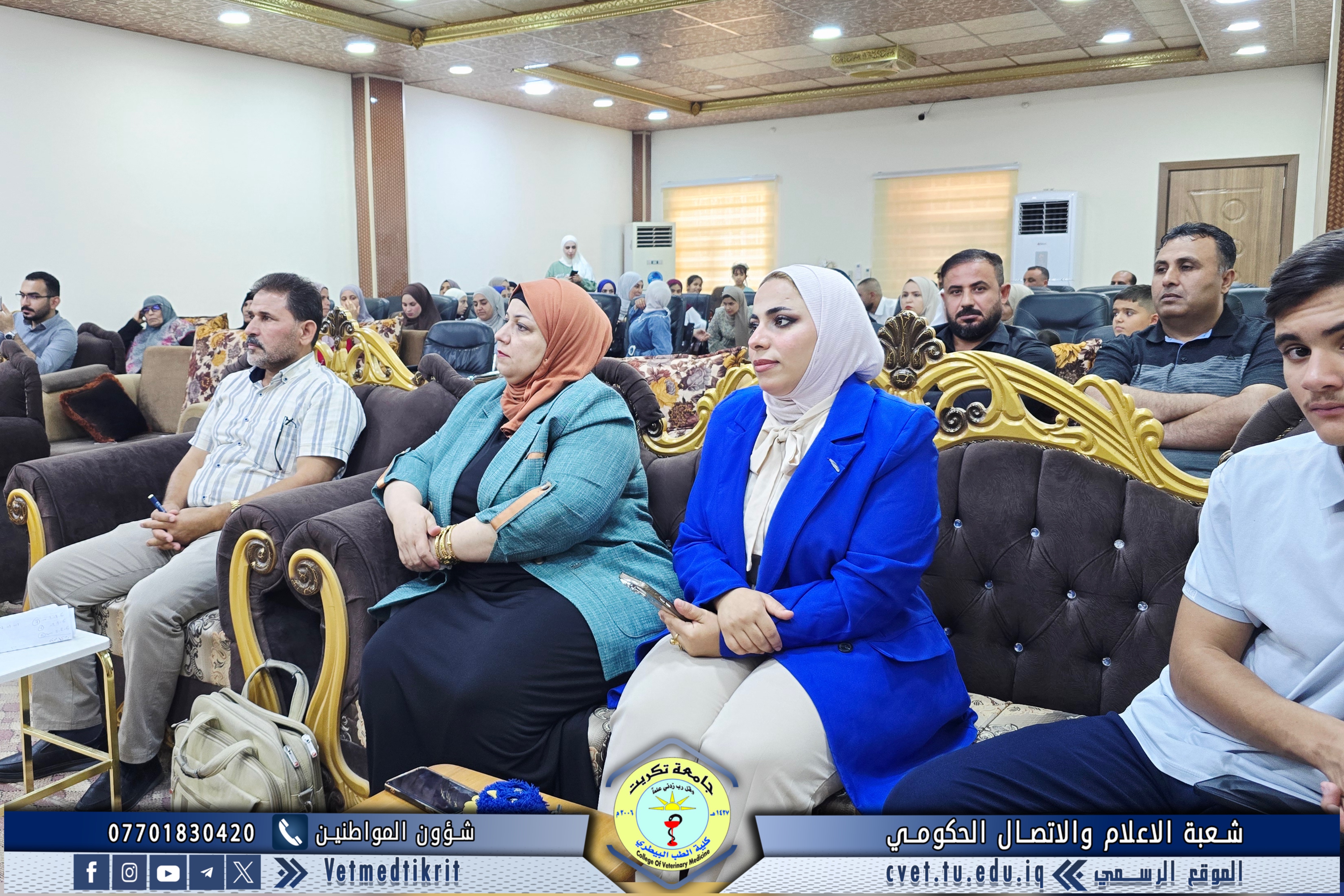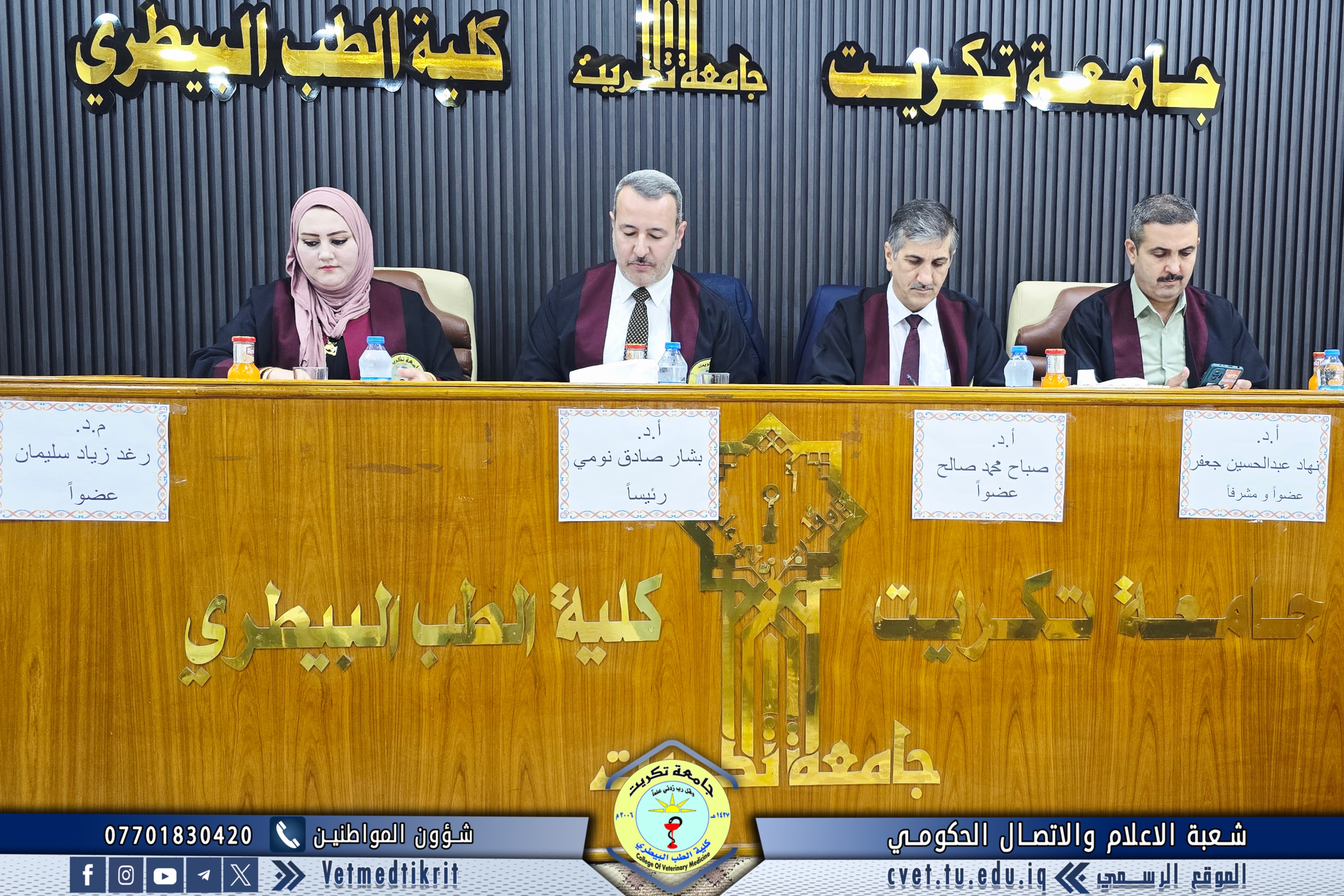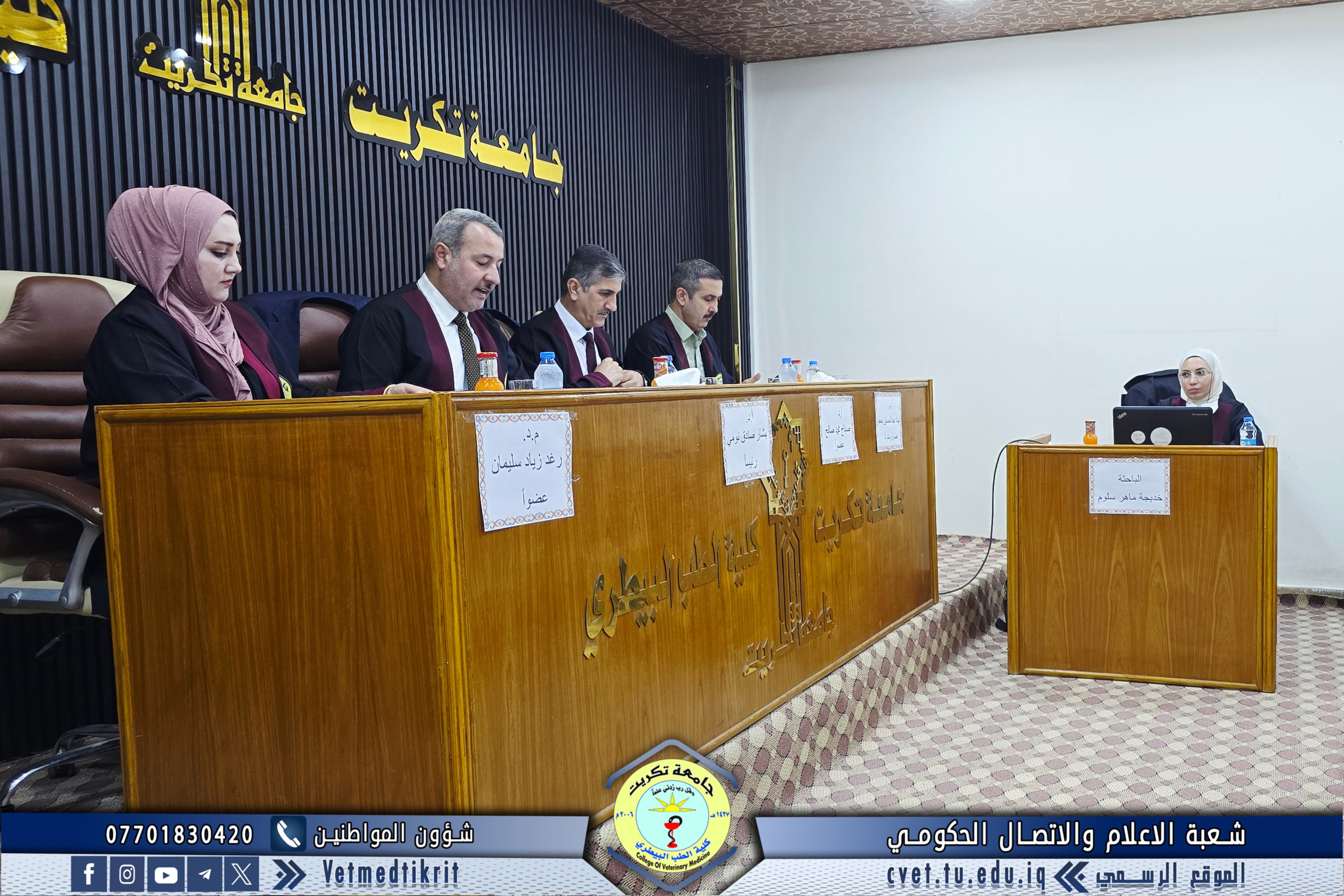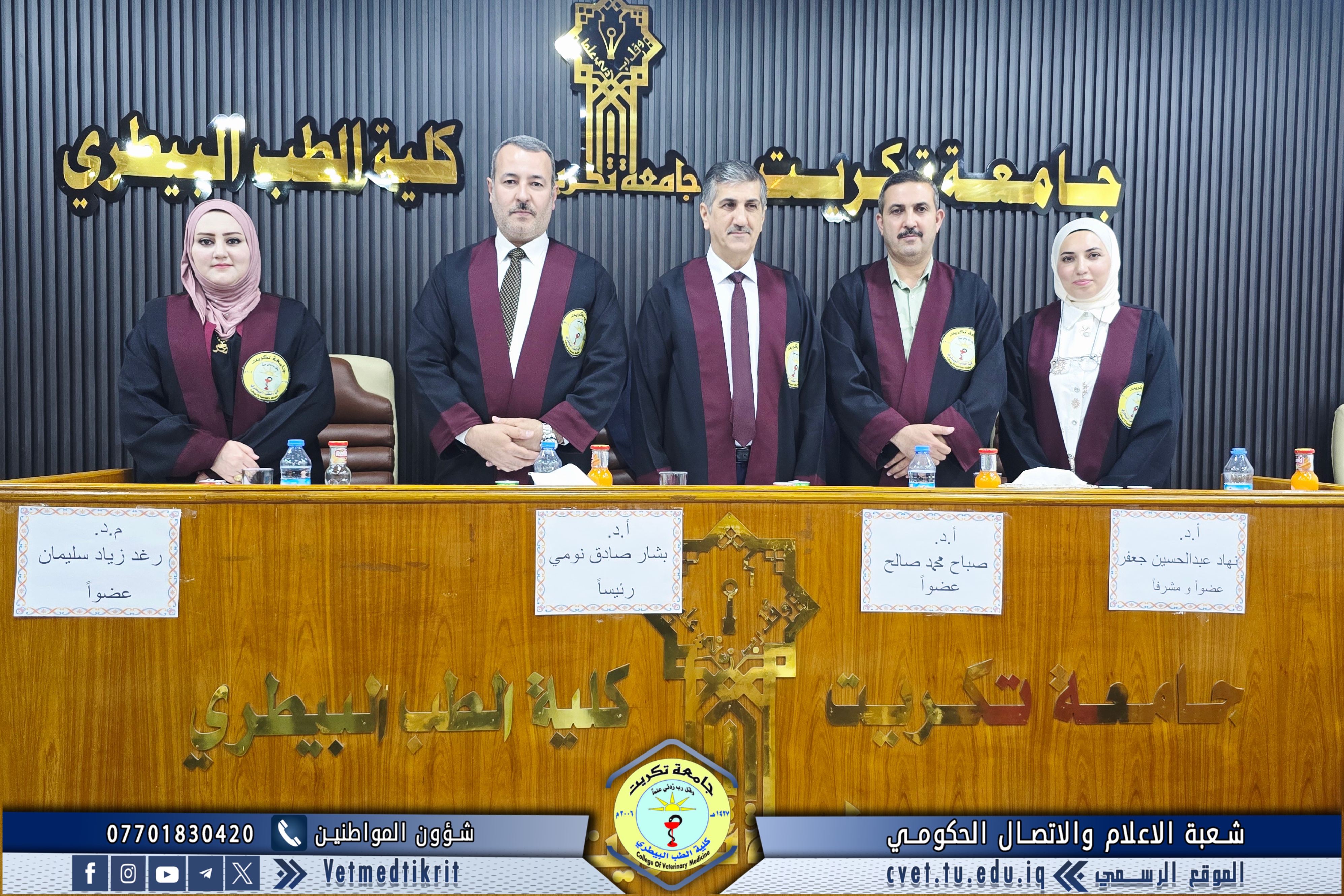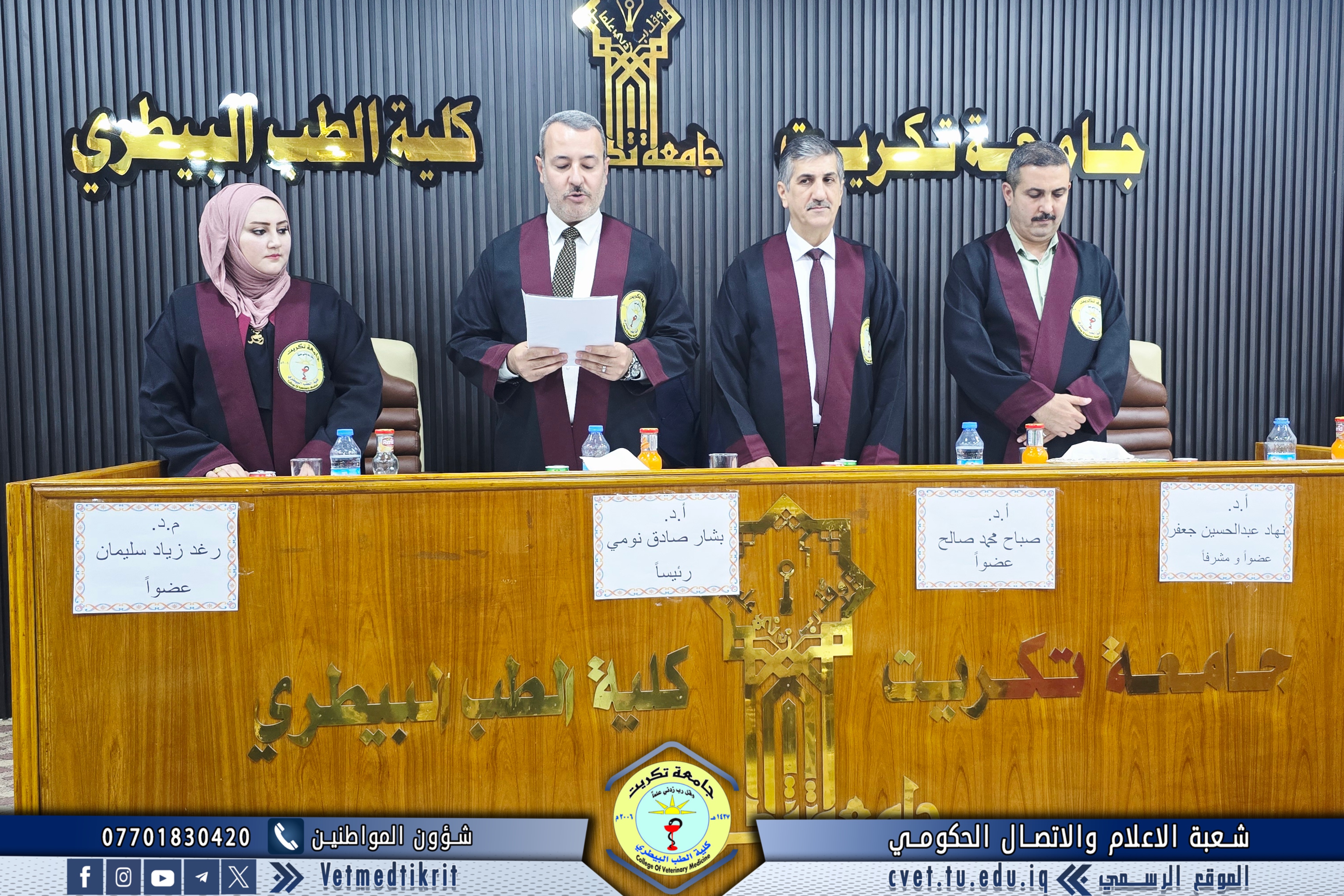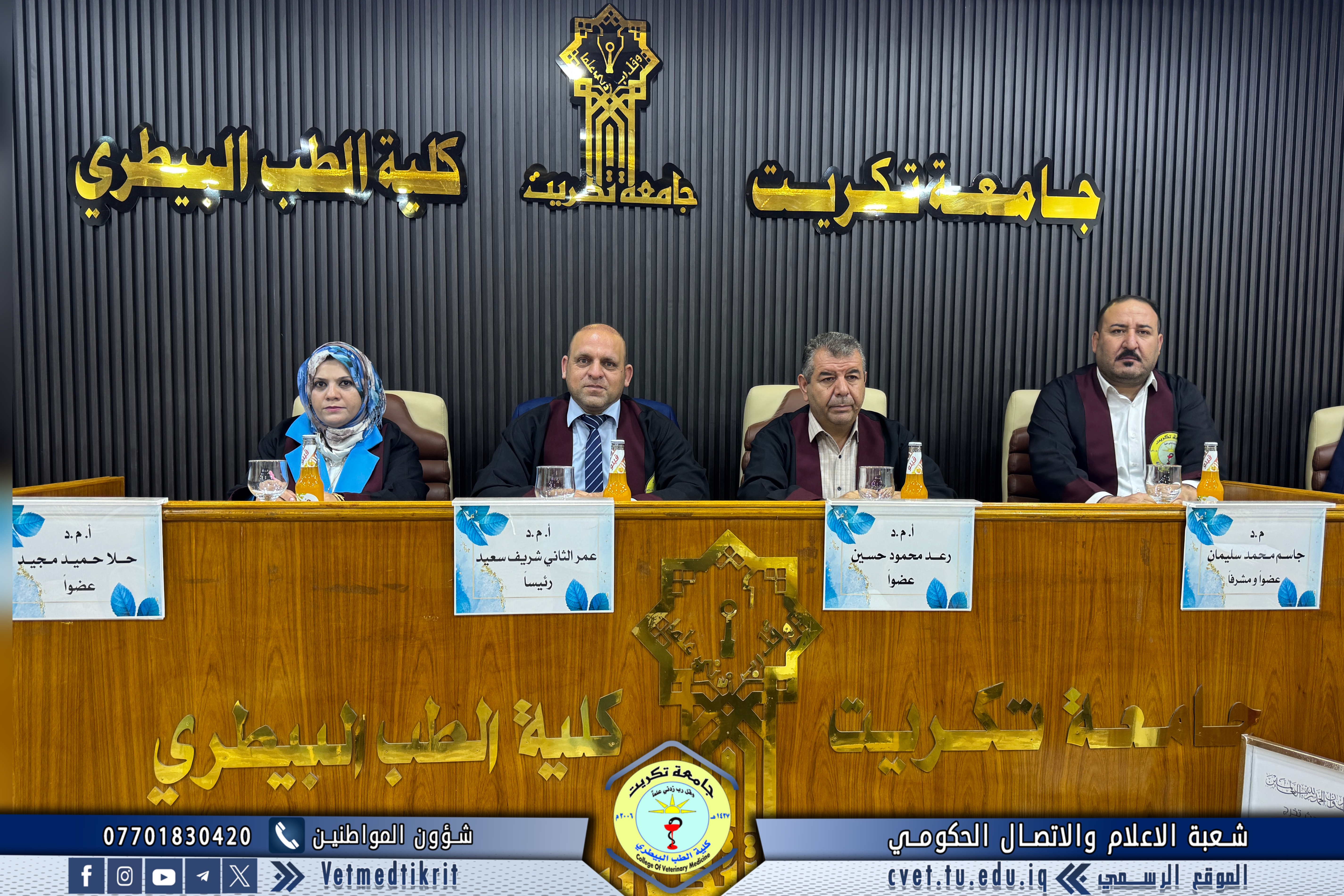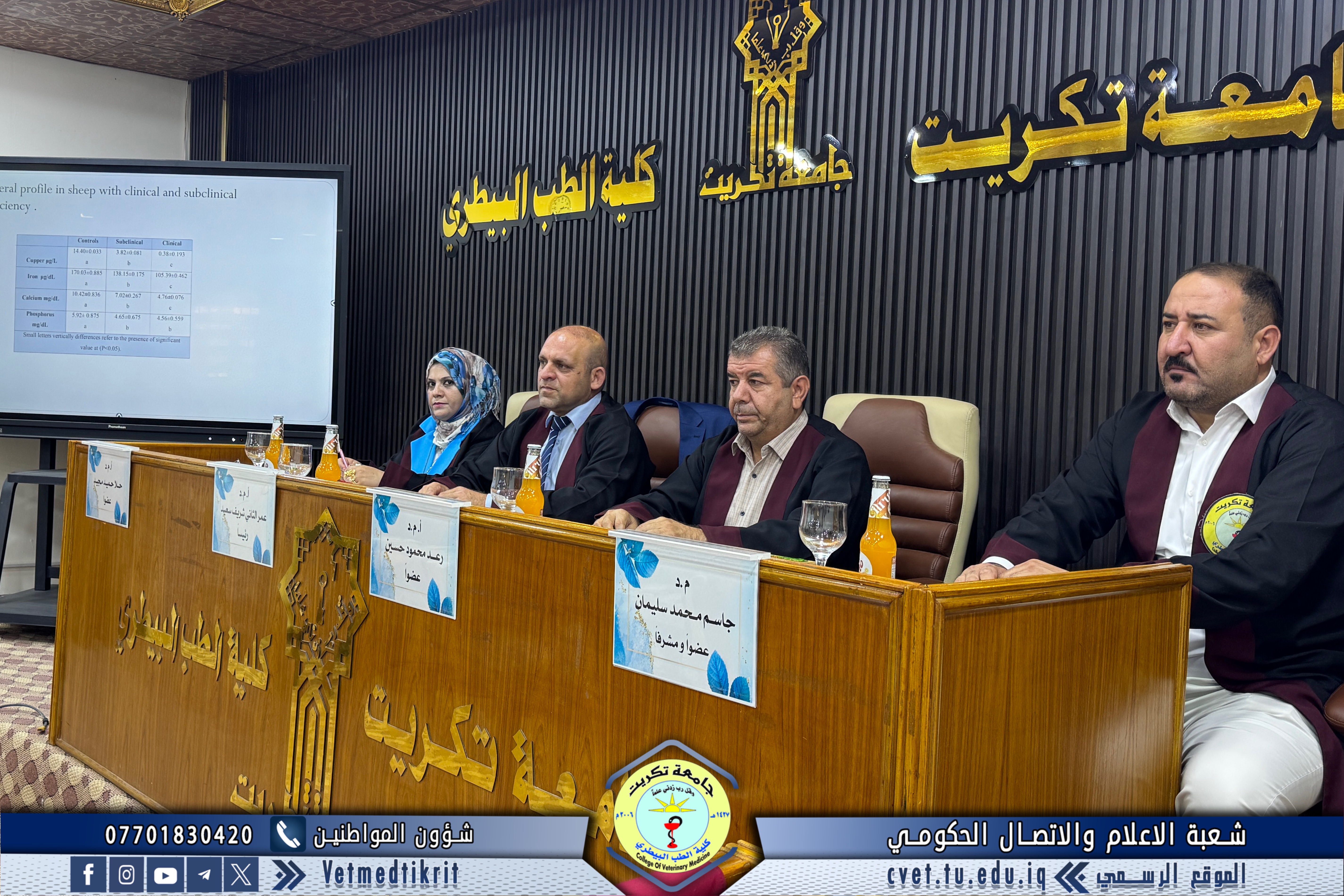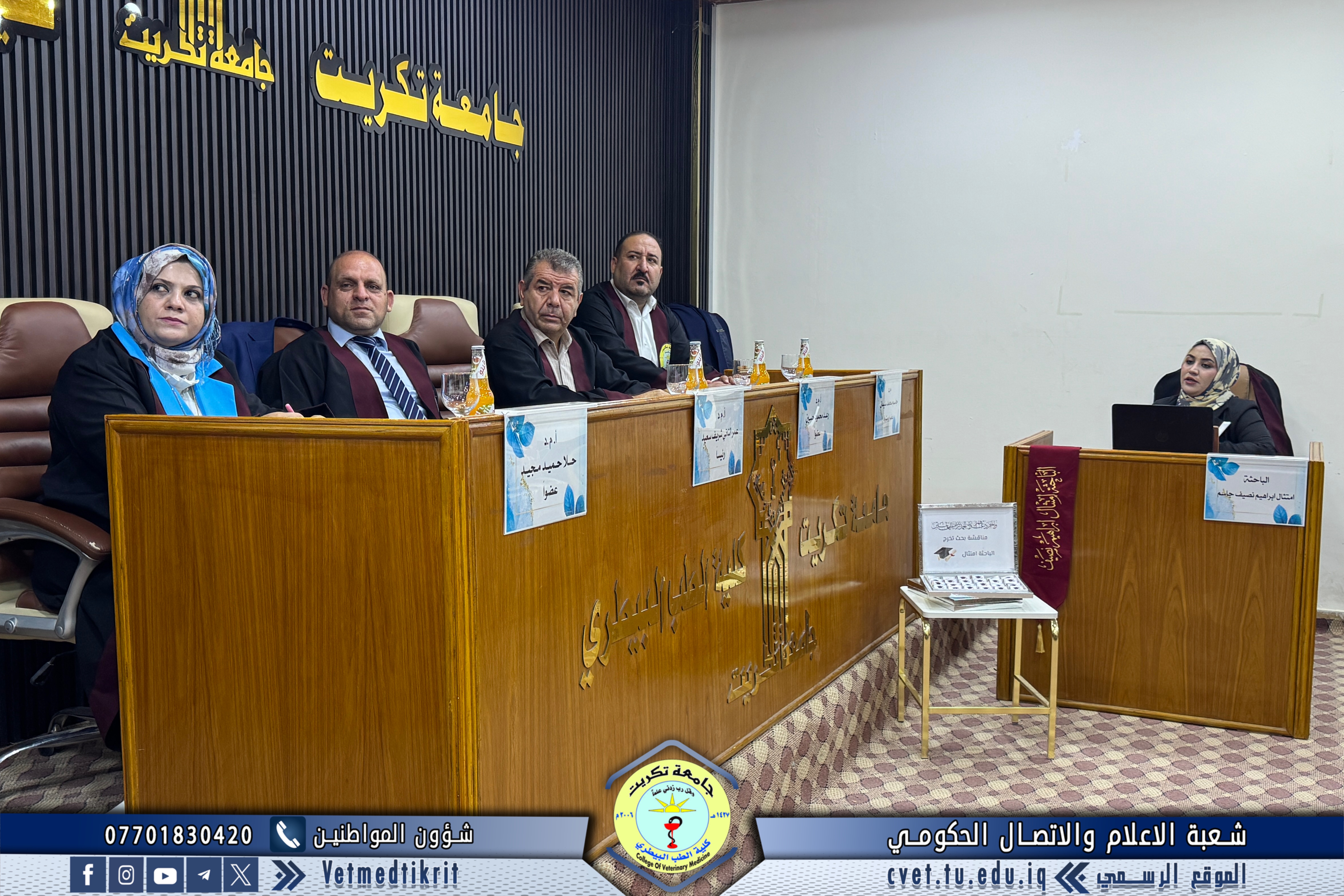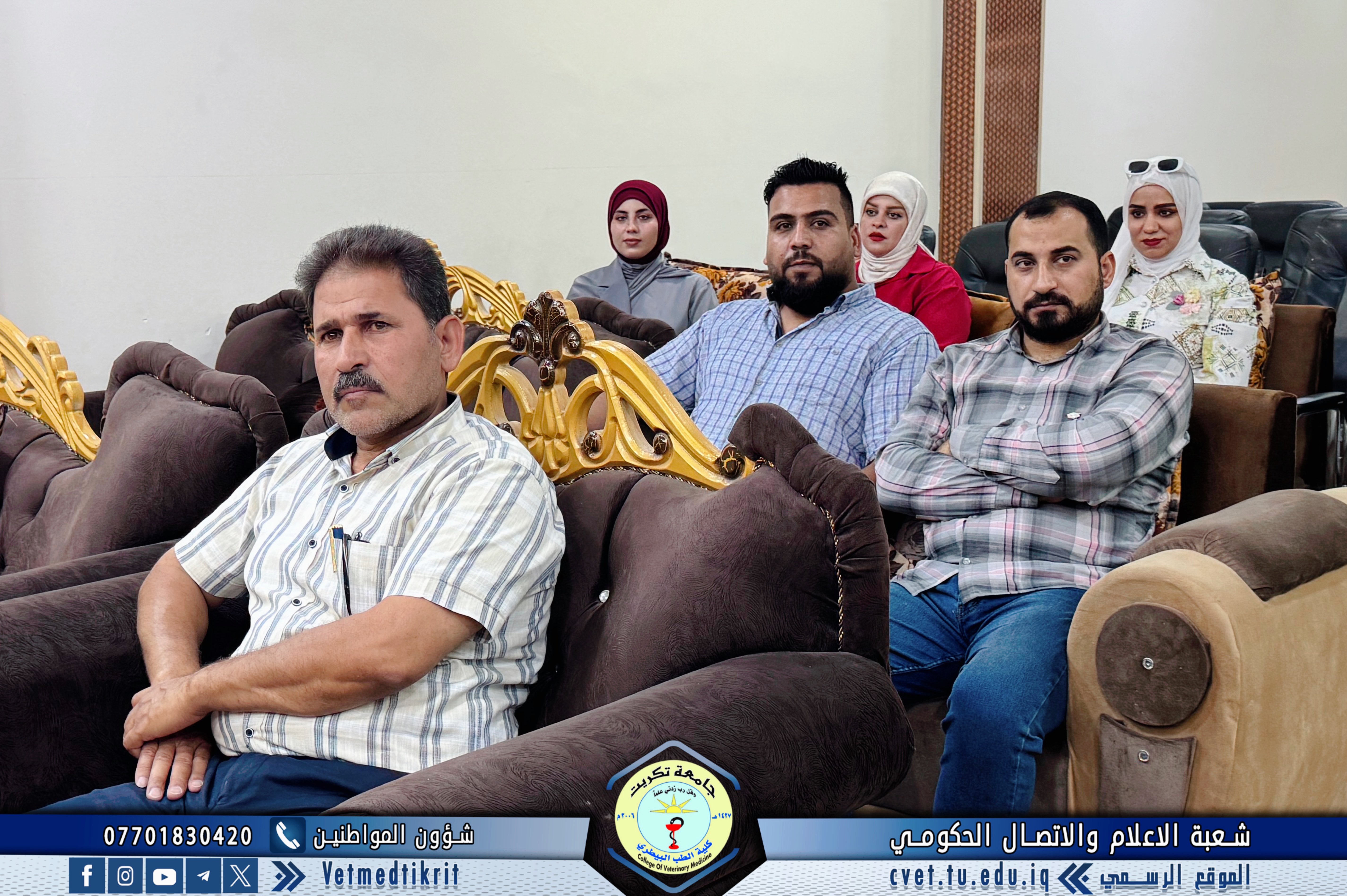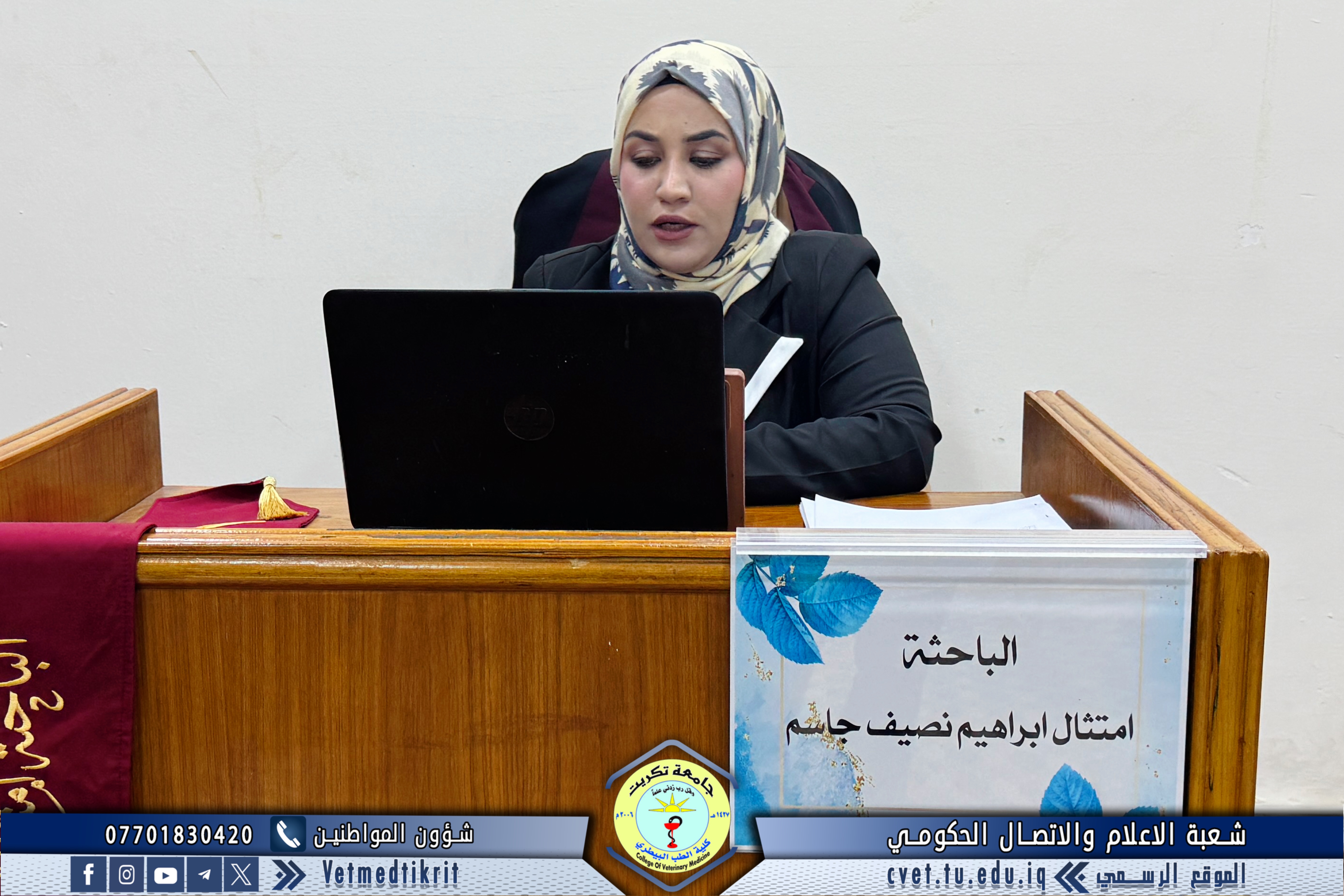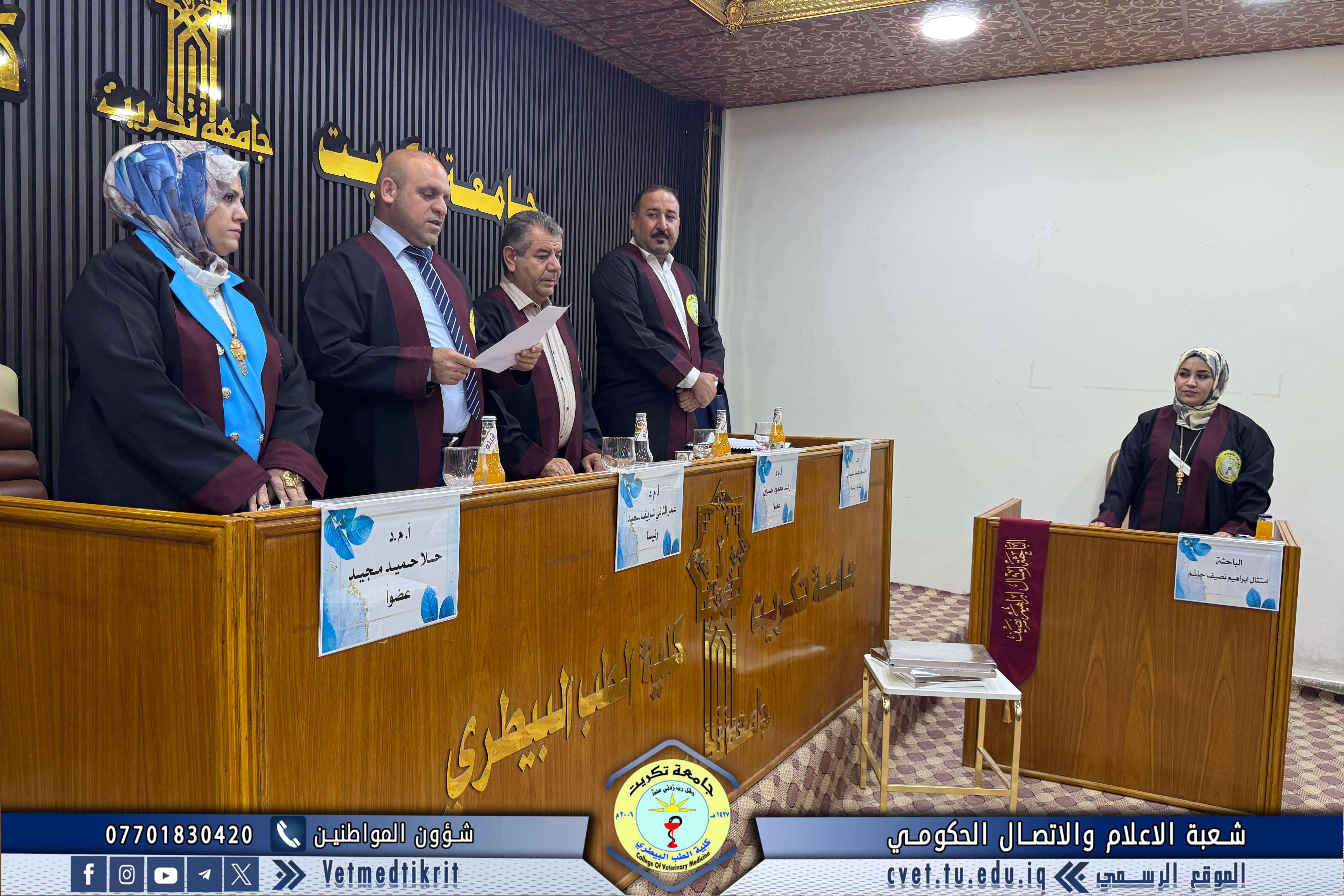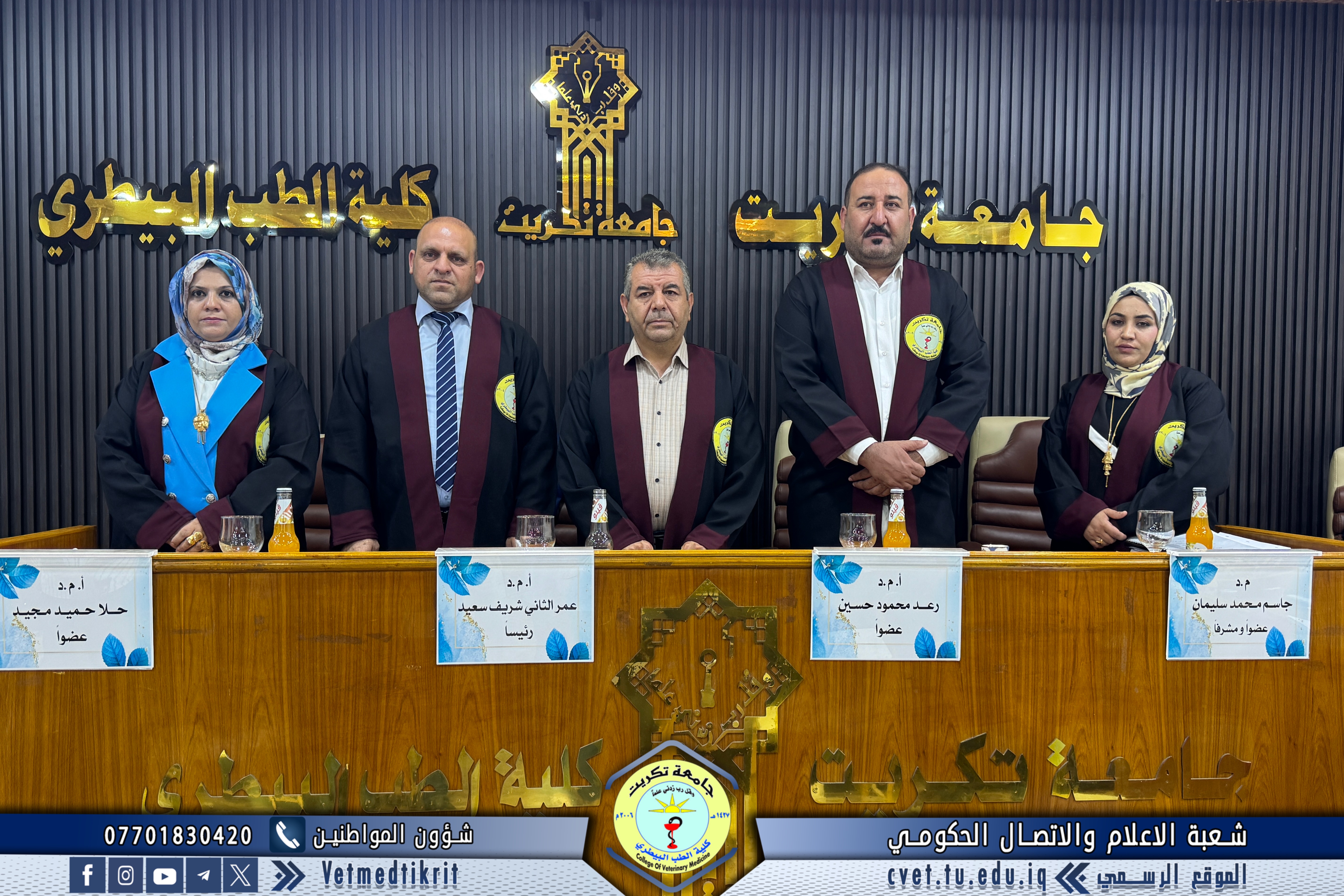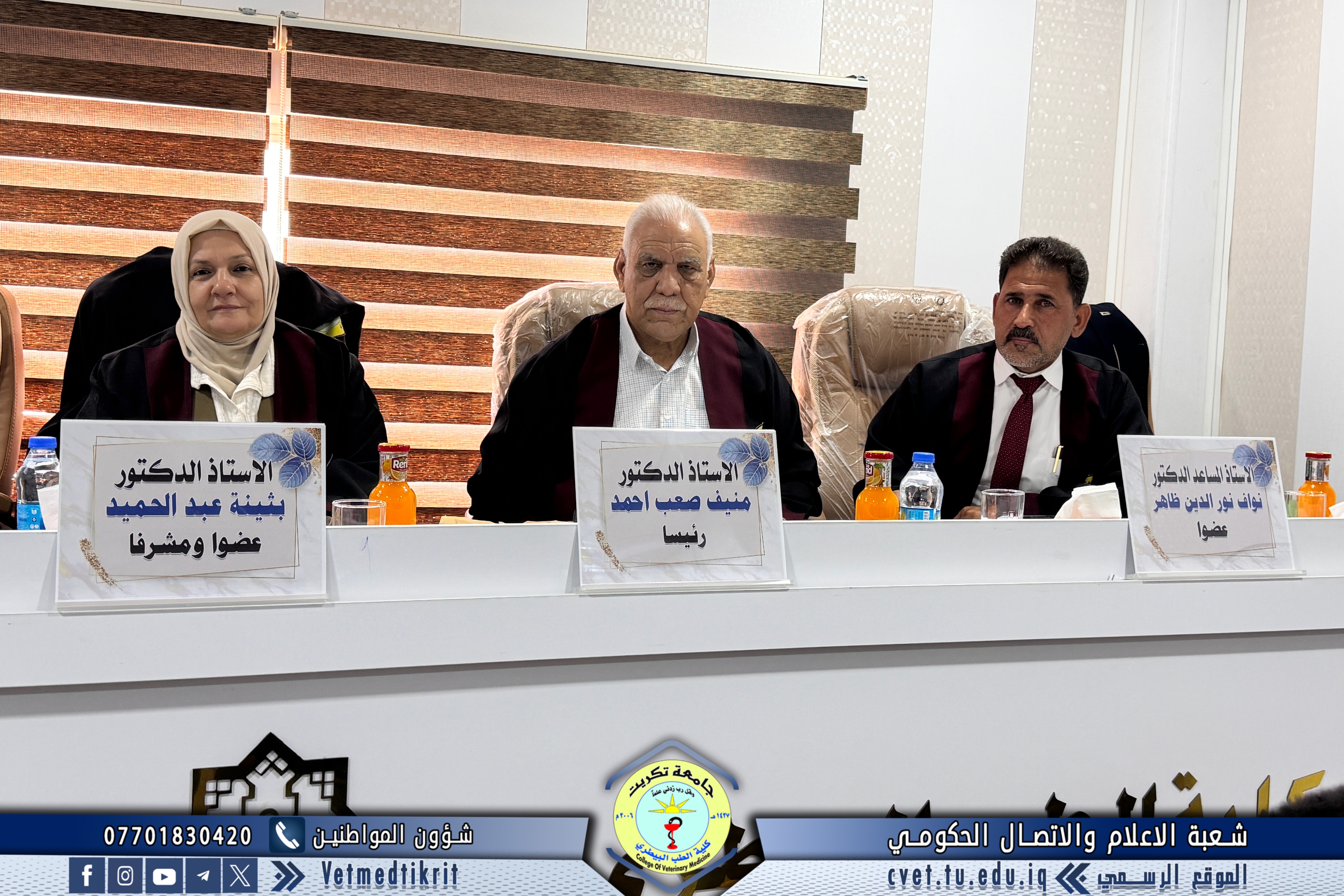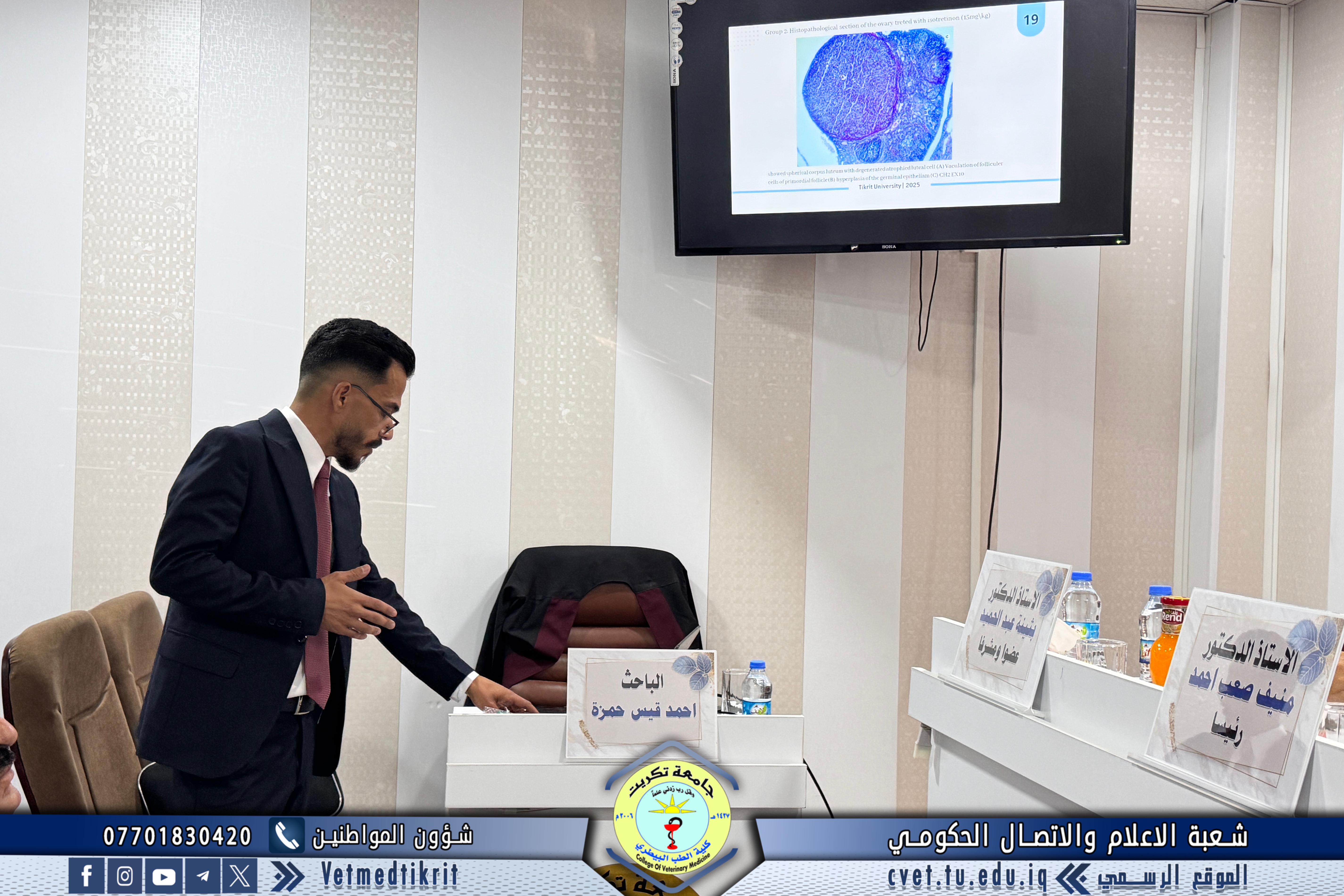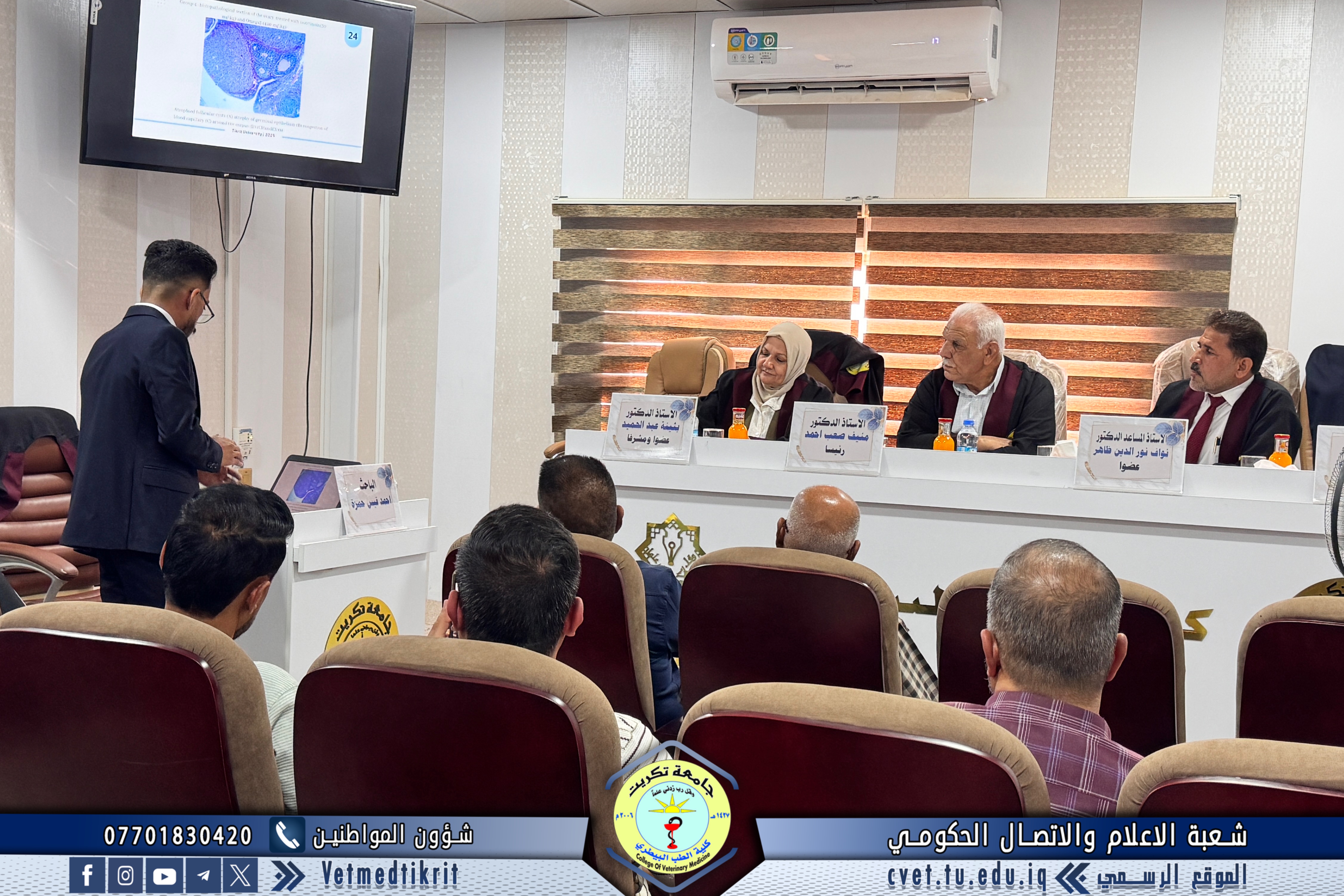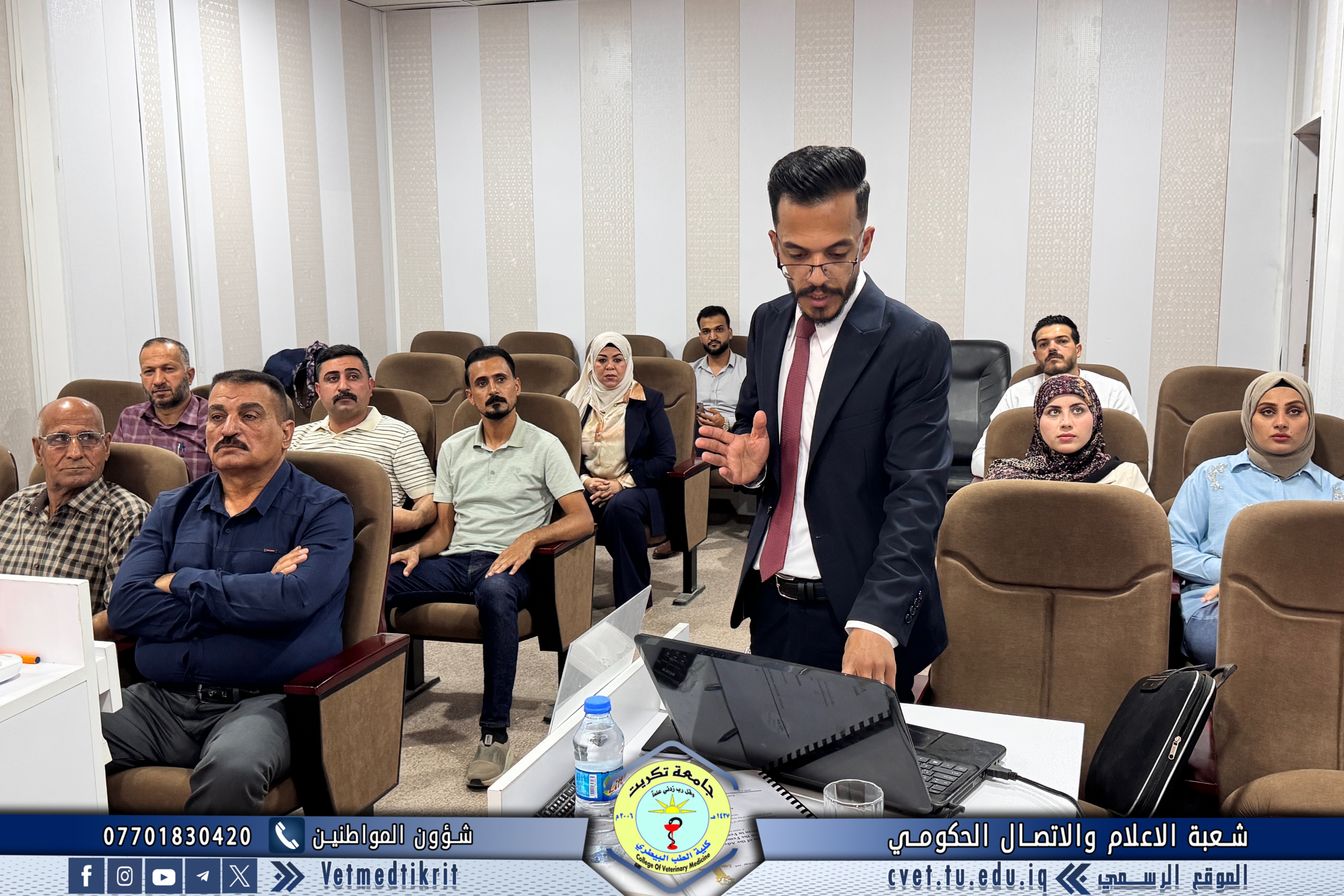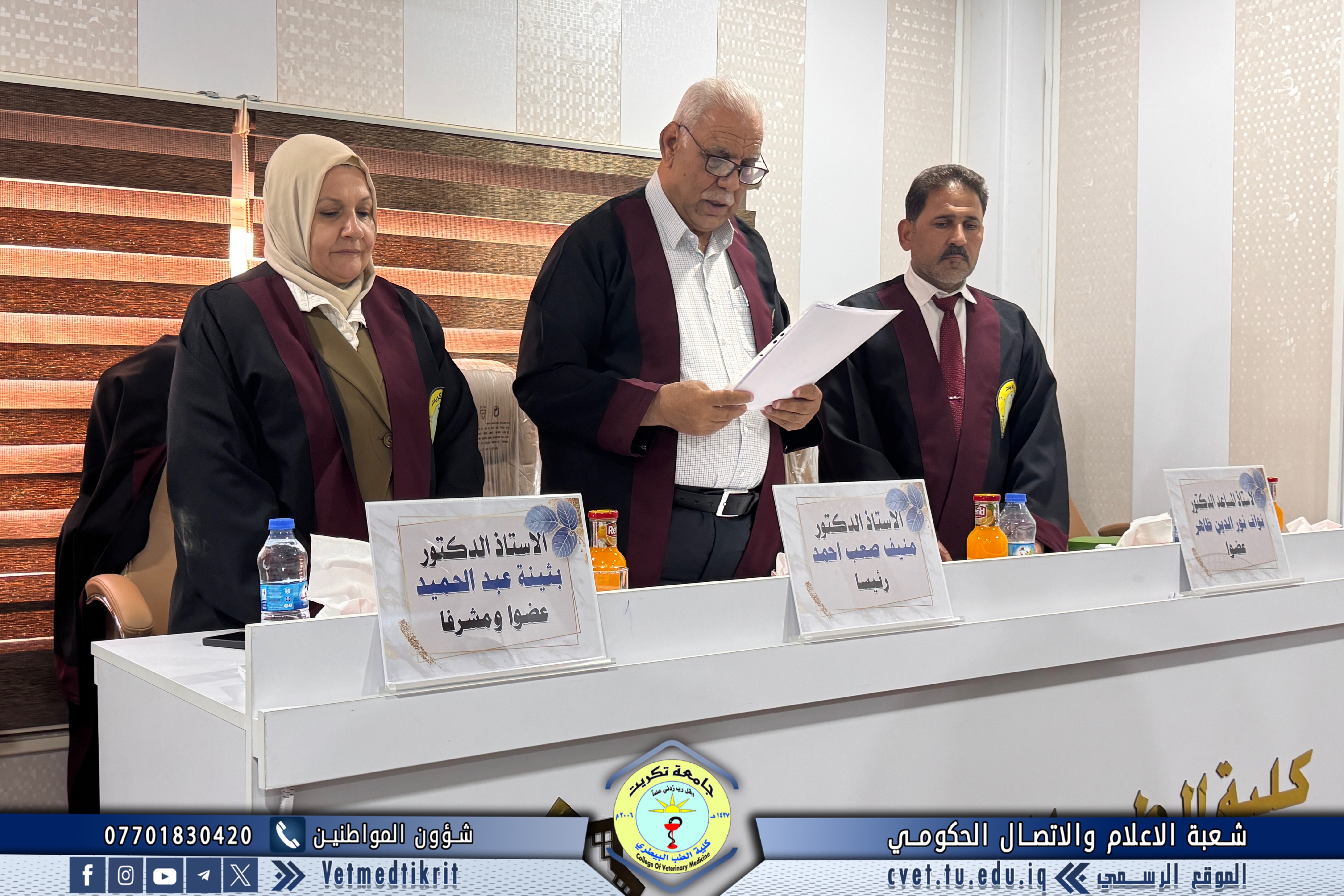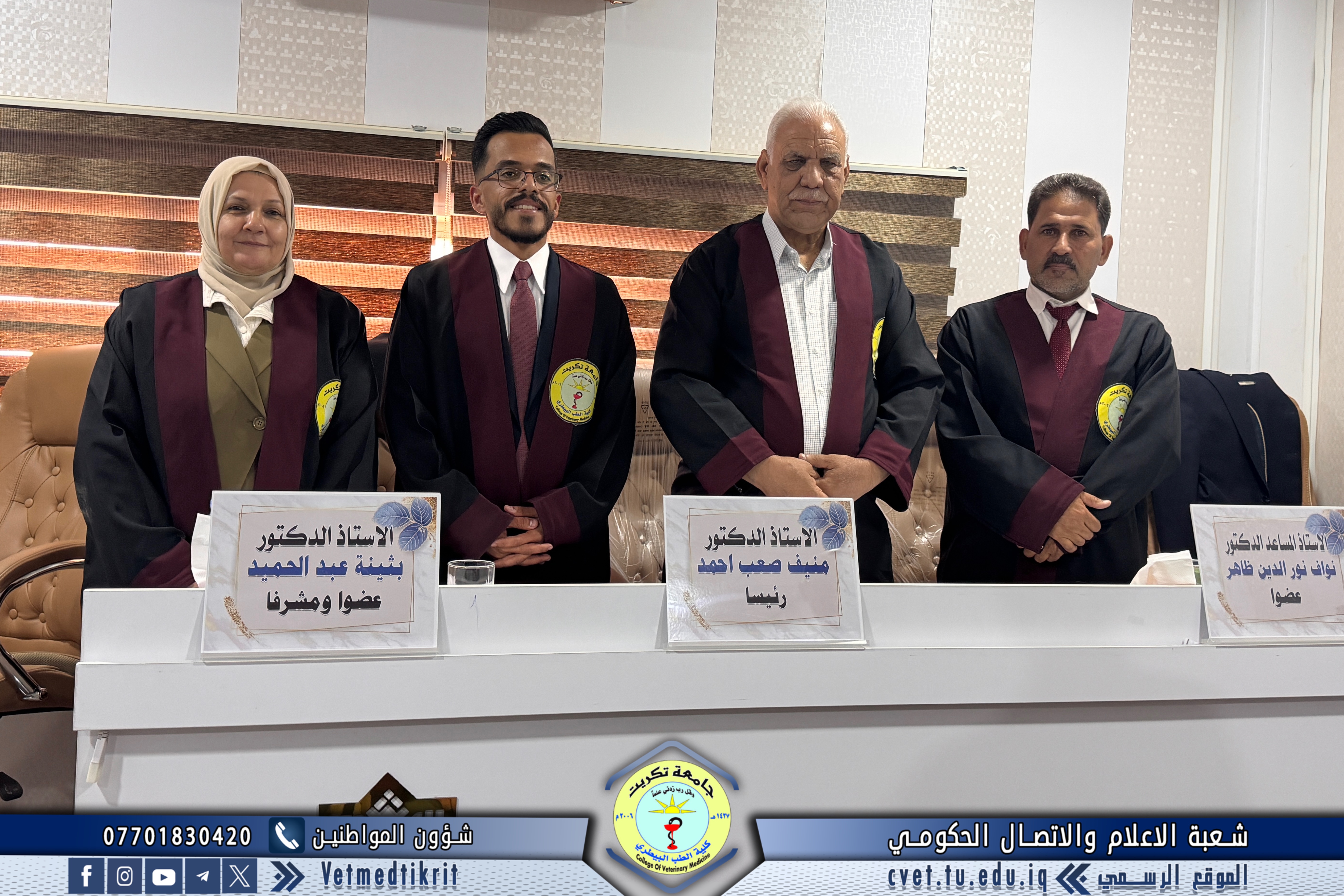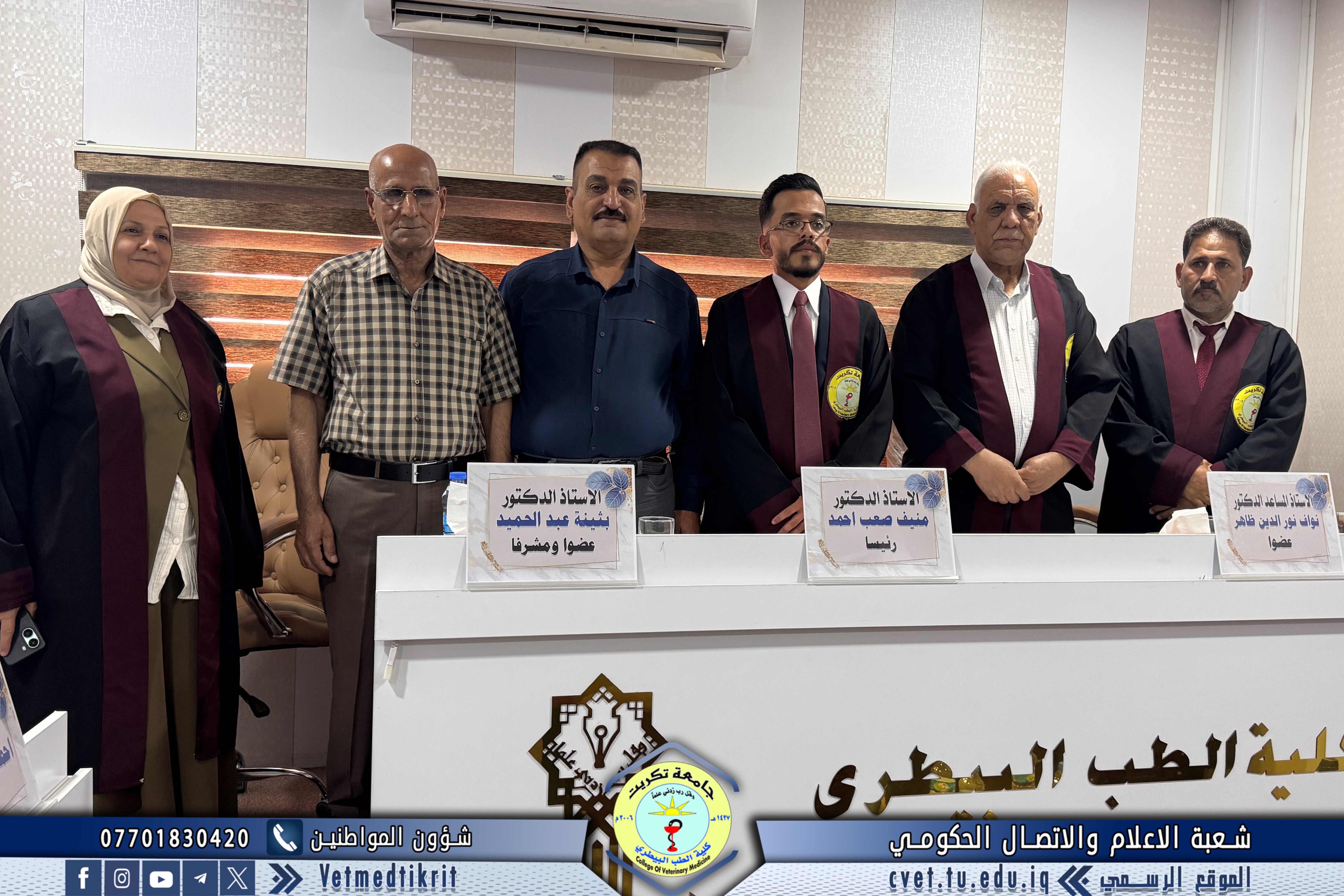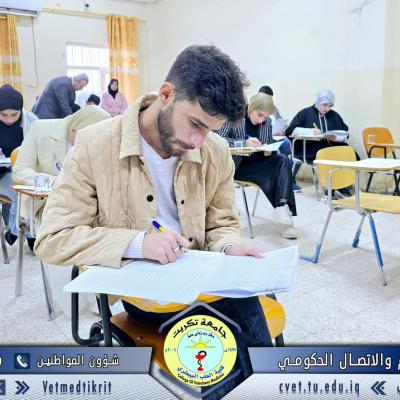With the grace of Allah, the College of Veterinary Medicine at the University of Tikrit held a defense for the Master’s thesis entitled:
“Isolation of Escherichia coli O157:H7 from Poultry Farms and Workers in Al-Hawija City” by the student Haj Ibrahim Hameed, specializing in Microbiology.
The examining committee consisted of:
-
Prof. Dr. Ammar Riyadh Qasim / Microbiology / College of Veterinary Medicine – University of Diyala / Chair
-
Prof. Dr. Nihad Abdulhussein Jaafar / Microbiology-Bacteriology / College of Veterinary Medicine – University of Tikrit / Member
-
Prof. Abduljabbar Mohammed Hussein / Poultry Diseases / College of Veterinary Medicine – University of Tikrit / Member
-
Asst. Prof. Dr. Sanaa Saud Ahmed / Microbiology / College of Veterinary Medicine – University of Tikrit / Member and Supervisor
-
Prof. Dr. Bashar Sadiq Noami / Immunology and Bacterial Diagnostics / College of Veterinary Medicine – University of Tikrit / Member and Supervisor
The study involved 100 samples collected from poultry and workers in poultry farms in Al-Hawija district, Kirkuk province, between March 1, 2024, and August 1, 2024. Of these, 75 samples were taken from poultry cloaca and 25 fecal samples from workers. The samples were transferred to the laboratories of the Technical Institute / Hawija – Department of Medical Laboratories, where they underwent microbiological testing. Cultures were performed on MacConkey agar and Eosin Methylene Blue (EMB) agar. Bacterial isolates were identified based on morphological traits, biochemical tests, and molecular diagnosis using the Polymerase Chain Reaction (PCR) technique.
The isolates grew on EMB medium forming green metallic sheen colonies, characteristic of E. coli. On MacConkey agar, the bacteria produced pink colonies, further confirming E. coli. Using the Vitek 2 system, the isolates were identified as pure E. coli with a confidence level of 93–99%.
Key results included:
-
E. coli prevalence in poultry samples was 83% (62/75), while among workers it was 68% (17/25).
-
Serotype O157:H7 isolation rates using Chromogenic E. coli O157:H7 medium were 44% in poultry and 28% in workers, consistent with PCR molecular findings.
-
All isolates carried the 16s ribosomal gene (100%). The RfbE O157 gene was detected in 19% of poultry samples and 23% of worker samples, while the fliC H7 gene appeared in 10% of poultry and 12% of workers.
Antibiotic susceptibility testing for 11 antibiotics (Amikacin, Amoxicillin, Cefepime, Ceftazidime, Cefotaxime, Ciprofloxacin, Colistin, Gentamicin, Imipenem, Meropenem, and Trimethoprim) revealed:
-
High resistance rates of E. coli to Amoxicillin (100%), Trimethoprim (96%), and Ciprofloxacin (95%).
-
Moderate resistance to Gentamicin (67%), Colistin (50%), and Ceftazidime (45%).
-
Full sensitivity to Amikacin (100%), Imipenem (100%), Meropenem (94%), and Cefepime (90%).
-
Lower sensitivity to Cefotaxime (60%) and Gentamicin (33%).
The defense was held in the seminar hall of the College of Veterinary Medicine, attended by the Associate Deans for Academic and Administrative Affairs, several faculty and staff members, and a gathering of students.
